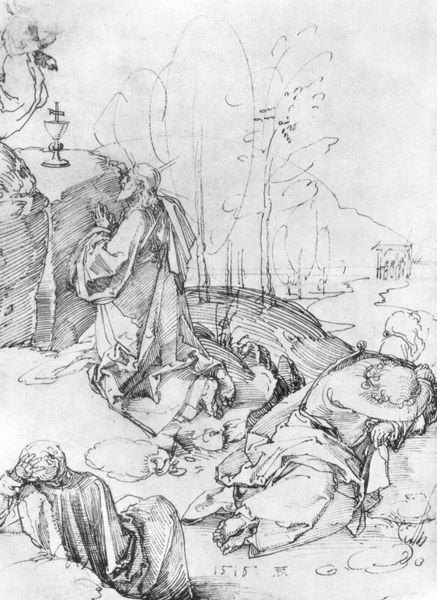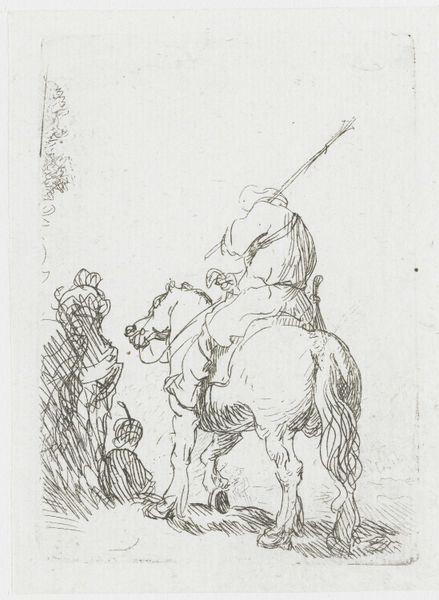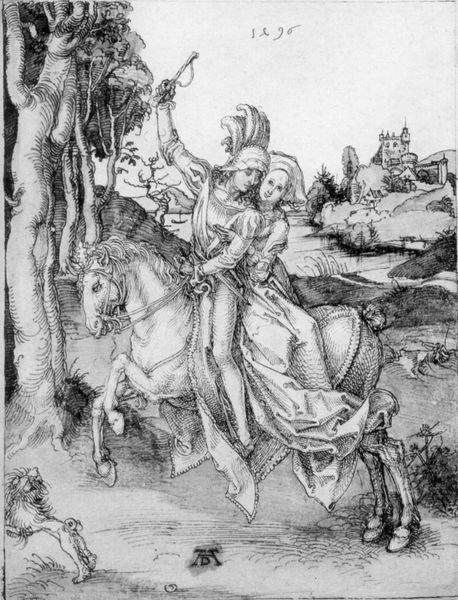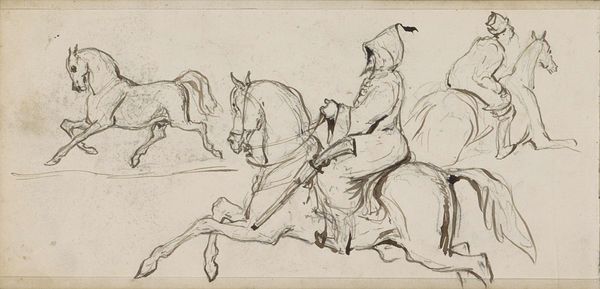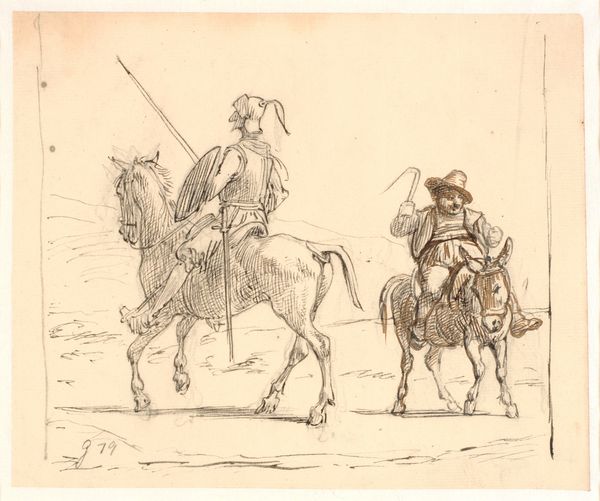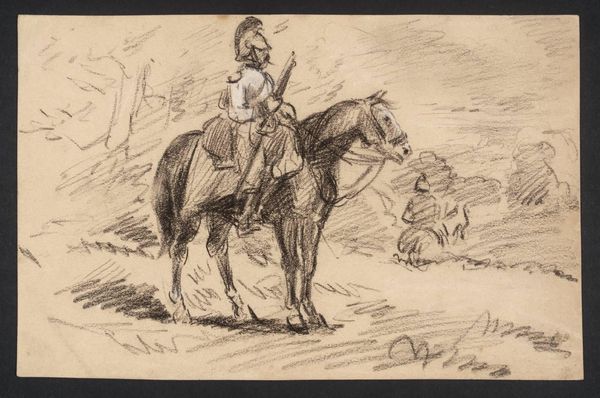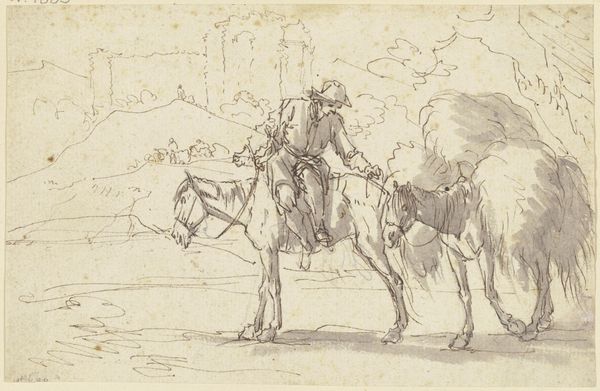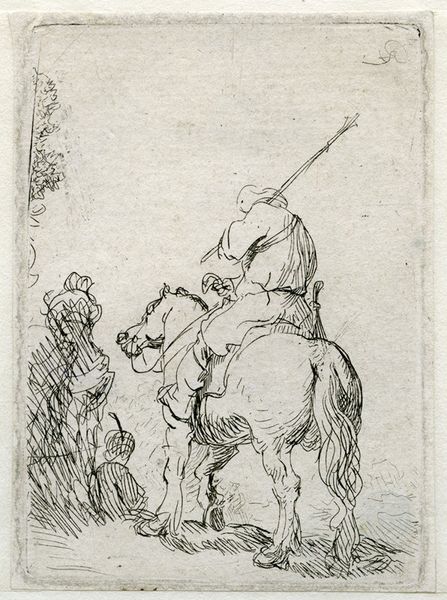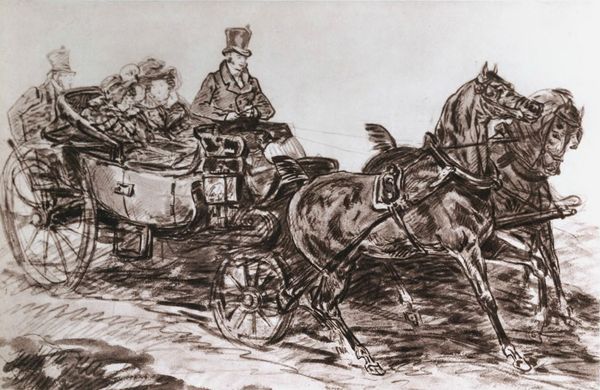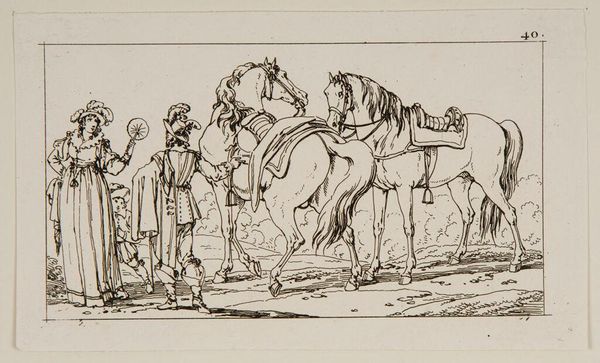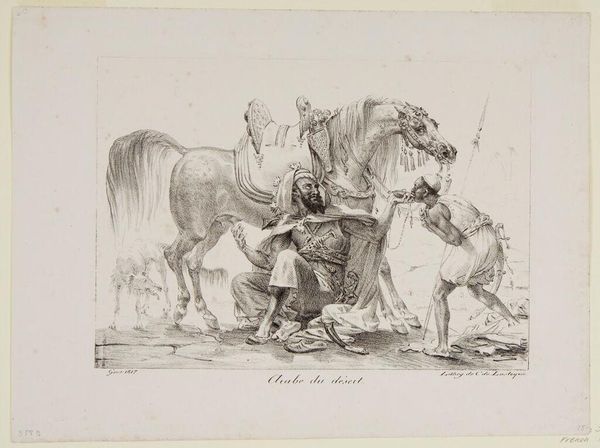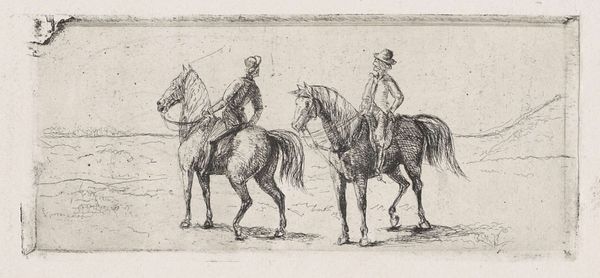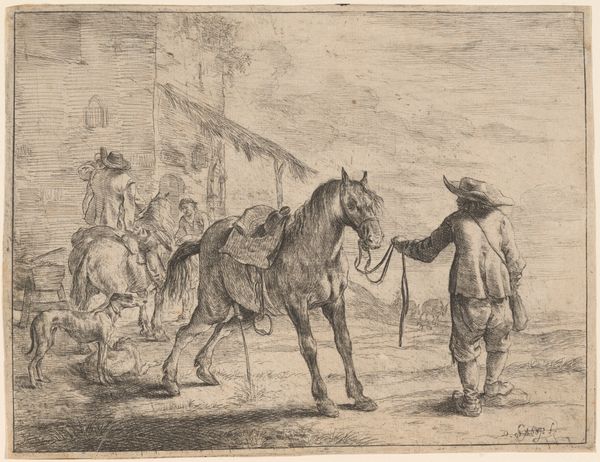
Copyright: Public domain
Curator: This drawing is titled “Saint Martin,” completed by Albrecht Durer around 1494. What do you make of it? Editor: It strikes me as stark, almost emaciated in its lines. There's a raw emotional intensity despite the controlled hatching and the rather stoic depiction of St. Martin. Curator: It’s rendered meticulously in pen and ink. Note how Durer, known for his printmaking, applies that level of detailed craftsmanship to the humbler medium of drawing. He captures the texture of fabric, the musculature of the horse, all while building up tonal depth through laborious mark-making. Consider the role the booming print market played in developing his art practice and making this detail so desired! Editor: True, the rendering is exquisite. I’m drawn to the interplay of light and shadow— the way he models form, but also creates such distinct planes of black and white. The lines become more than just descriptive; they seem to carry the weight of the story. The tension of forms almost evokes sculptural space. Curator: This depiction, though centered on St. Martin's famous act of charity - sharing his cloak with a beggar - also offers insights into the social realities of the era. Observe how Durer contrasts the wealth and status represented by the mounted knight against the impoverished state of the kneeling figure. The beggar appears almost skeletal, illustrating perhaps the plight of those marginalized by societal structures and perhaps devastated by famines. Editor: The positioning is certainly important here; the dynamic created through the formal asymmetry – the horse and rider dominating the space, contrasted against the supplicating figure - certainly reinforces those very visible social stratifications of the period. It almost creates a moral imbalance within the aesthetic space of the composition. Curator: It’s also important to see how he employs landscape to amplify these ideas, hinting at distant towns and rolling fields to frame how those outside power encounter the establishment. The image, while a genre and history painting and deeply devotional, hints at larger, possibly even politically critical, considerations of social responsibility. Editor: An act of piety immortalized through a master's skilled hand but transformed by Durer into a potent social document as well; yes, that does seem right, doesn't it? Thank you! Curator: And thank you, for helping highlight how these lines, literally on paper, can tell us so much.
Comments
No comments
Be the first to comment and join the conversation on the ultimate creative platform.
